Barks Blog
Ten Ways To Use Problem-Solving Games in Behavior Modification
Mental, intelligence games and problem solving activities can be used in a behavior modification program. We use games in environmental enrichment, but why couldn’t we use them, like we use toys in behavior modification? How would you do that, you ask? And, you might not know that this can be done? So let’s explore the 10 ways physical-type purchased intelligence games (like Nina Ottoson, and Dog Kingdom Pet Supply) can be used, as well as homemade games (1) and problem solving activities (2) that uses the dog’s brain to mentally tire – the dog has to think not just forage. Thinking is mentally tiring and satisfying.
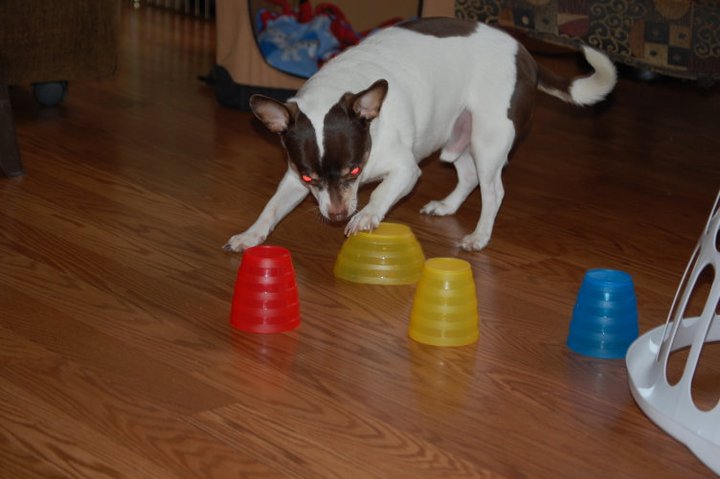
1) With human reactive dogs (as a part of a step-by-step program) in redirecting how a dog approaches a human, games can be used to make a human less worrisome. Distance and duration are key and then incremental increases and decreases. First with trainer, then with family members, then strangers.
A foraging game or intelligence game is set up between person and dog. Dog is on leash at first and has been pre-acclimated to games. Dog approaches the game, interacts with the game while human is present at a predetermined distance – and in essence is approaching human without reaction and being rewarded through the game. Then one puzzle is solved, dog is called away (which emphasizes that skill and makes it reliable) and what occurred recorded on video and in a log book.
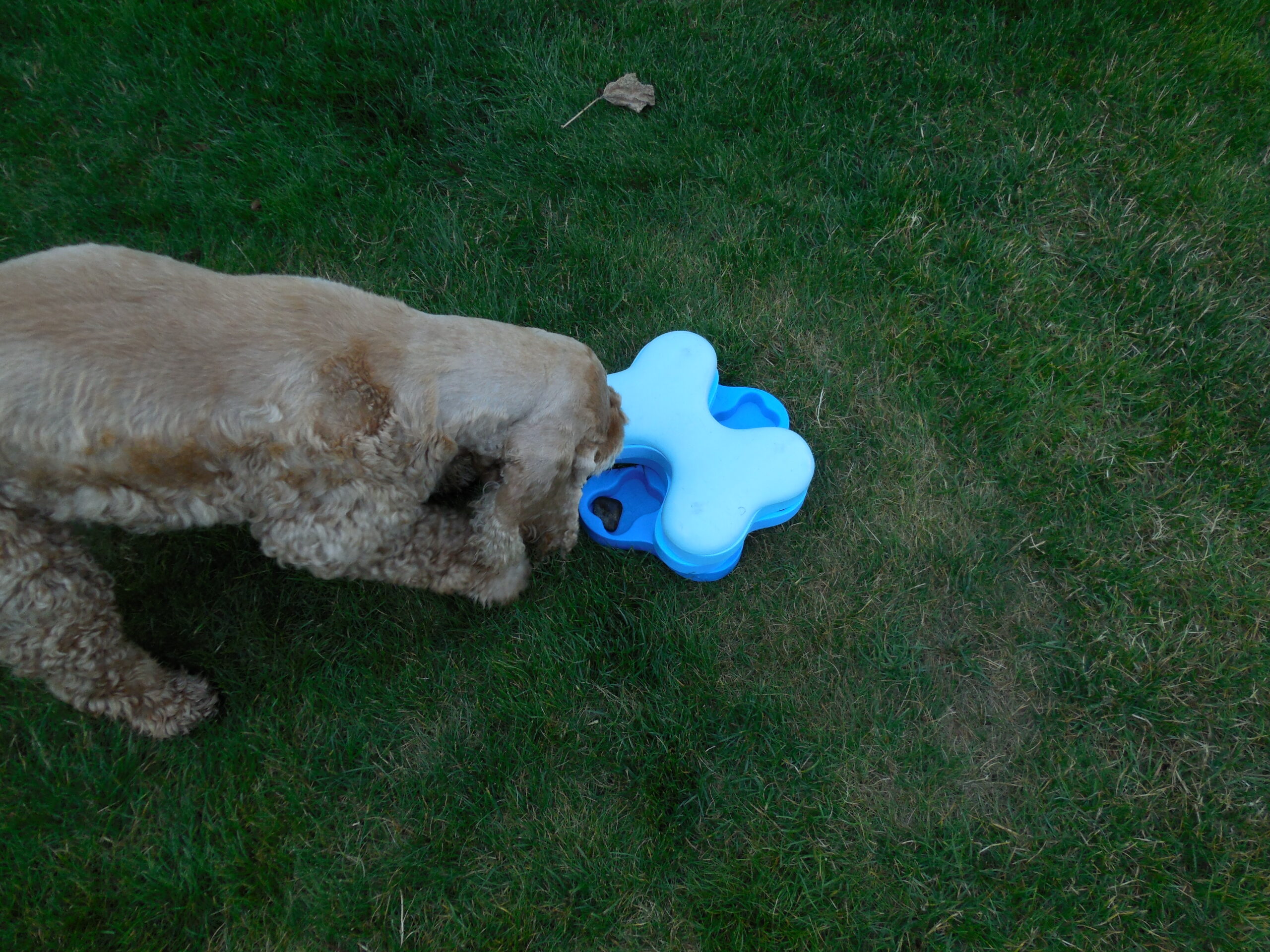
2) With dogs who fence chase or bark outdoors at everything. Providing an environmental enrichment course makes their outdoor area take on new meaning and keeps their mind busy.
Reduce yard access to fence with xpens or an “inner yard” of xpens where the dog goes first – expansion of area is what you are working toward.
Set up includes identifying what the dog loves – in one case rocks were of higher value than food. Finding what a dog loves is key. Is it foods, or toys or tennis balls.
Hide these under cups throughout the enrichment area. Release to find and then use to desensitize and counter condition to mock distractions – and real life distractions as well. These distractions would be a person walking by, a fake dog set up across street, a dog and person walking by, timing to mail truck etc.
Add intelligence games, bowl exercises and expand enrichment as the yard slowly expands. Changing the habit of the dog in yard is the goal. What do you want the dog to do instead? This could be teaching only alert barking, quiet look, and no interest in fence chasing. There are other things to do.
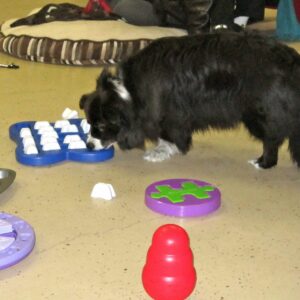
3) Dog stressed in class situation? Take out a game and allow dog to work on it behind a barrier or in classroom. A stressful situation becomes something to look forward to.
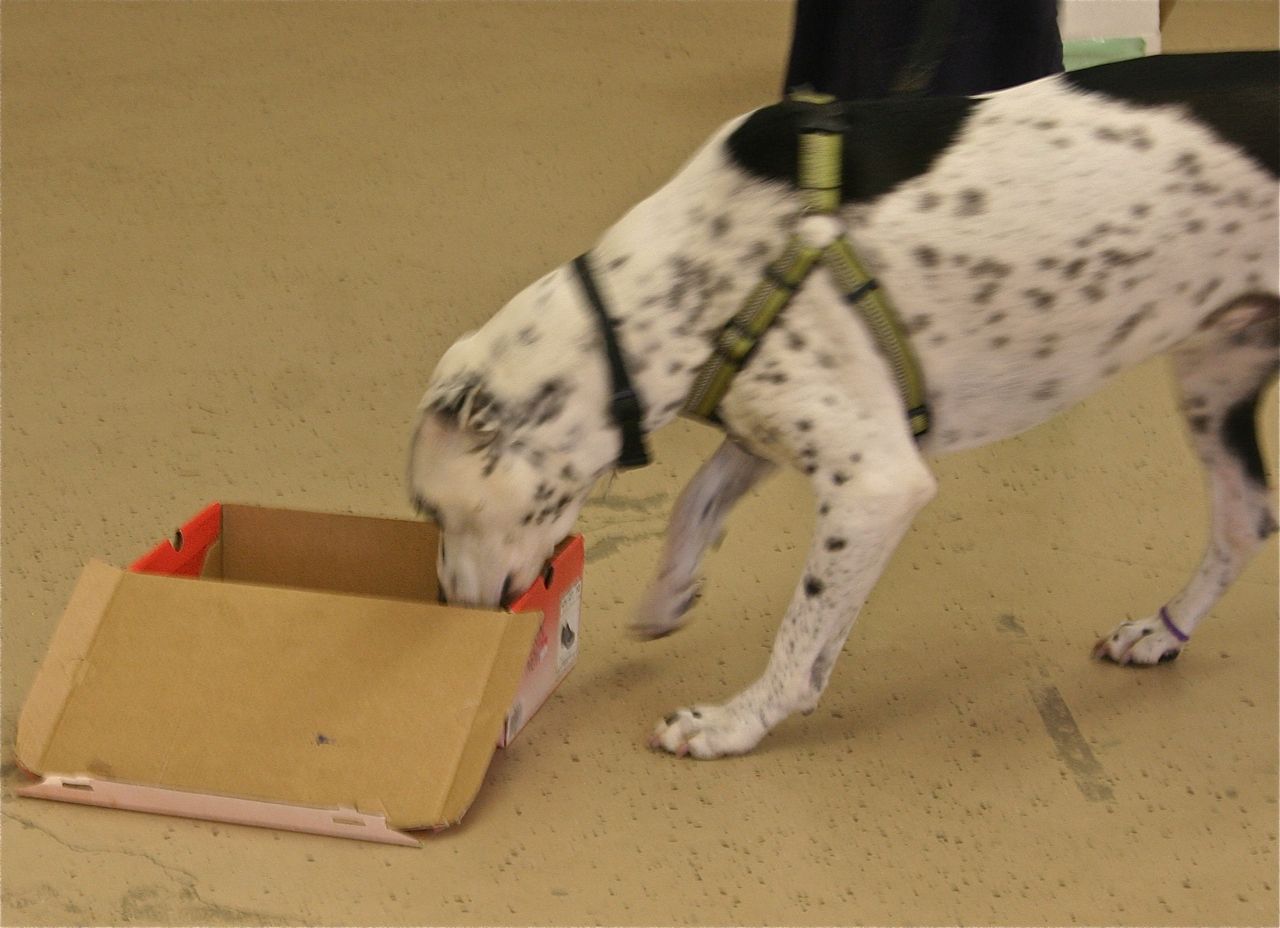
4) Great for reactive dog classes or confident transformation classes. Dogs working on puzzles are not focused on other dogs or people in the room. They begin to realize they can be in the presence of other dogs safely, as well as people. AND IT IS a great interactive tool for the other end of the leash.
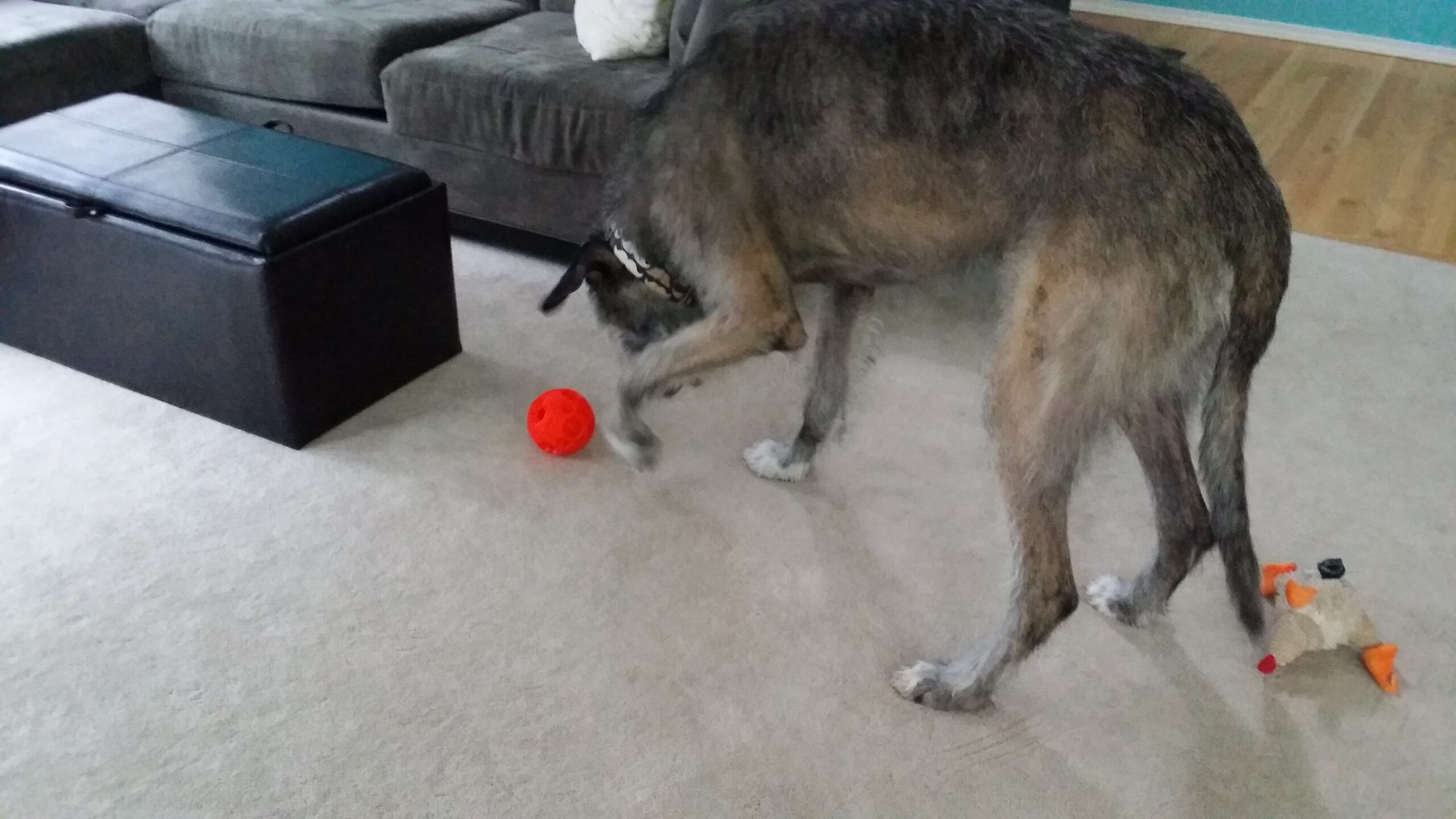
5) Resource Guarder. Providing multiple games as feeding receptacles can take the focus away from a “bowl guarder”. Teaching a dog “off” by using a foraging toy makes new habits for location guarders. Off becomes fun.
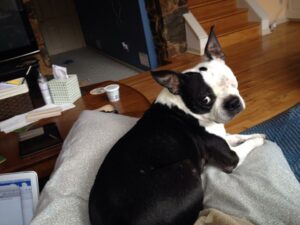
6) Separation anxiety. Very helpful in setting up an indoor “find it” course, slowly and incrementally. Leaving equals the good things flow – and soon the dog will be happy to see you go. The key here is to “know your dog” – what do they LOVE (appetitive motivators – which is more than food). And it changes the habit of grabbing the keys, heading out the door, expecting the dog to subsist with nothing to work their mind (like closing you in a room with no books, crafts, tools etc.). Variety is the key here. And in the beginning short duration, working up to longer times away.
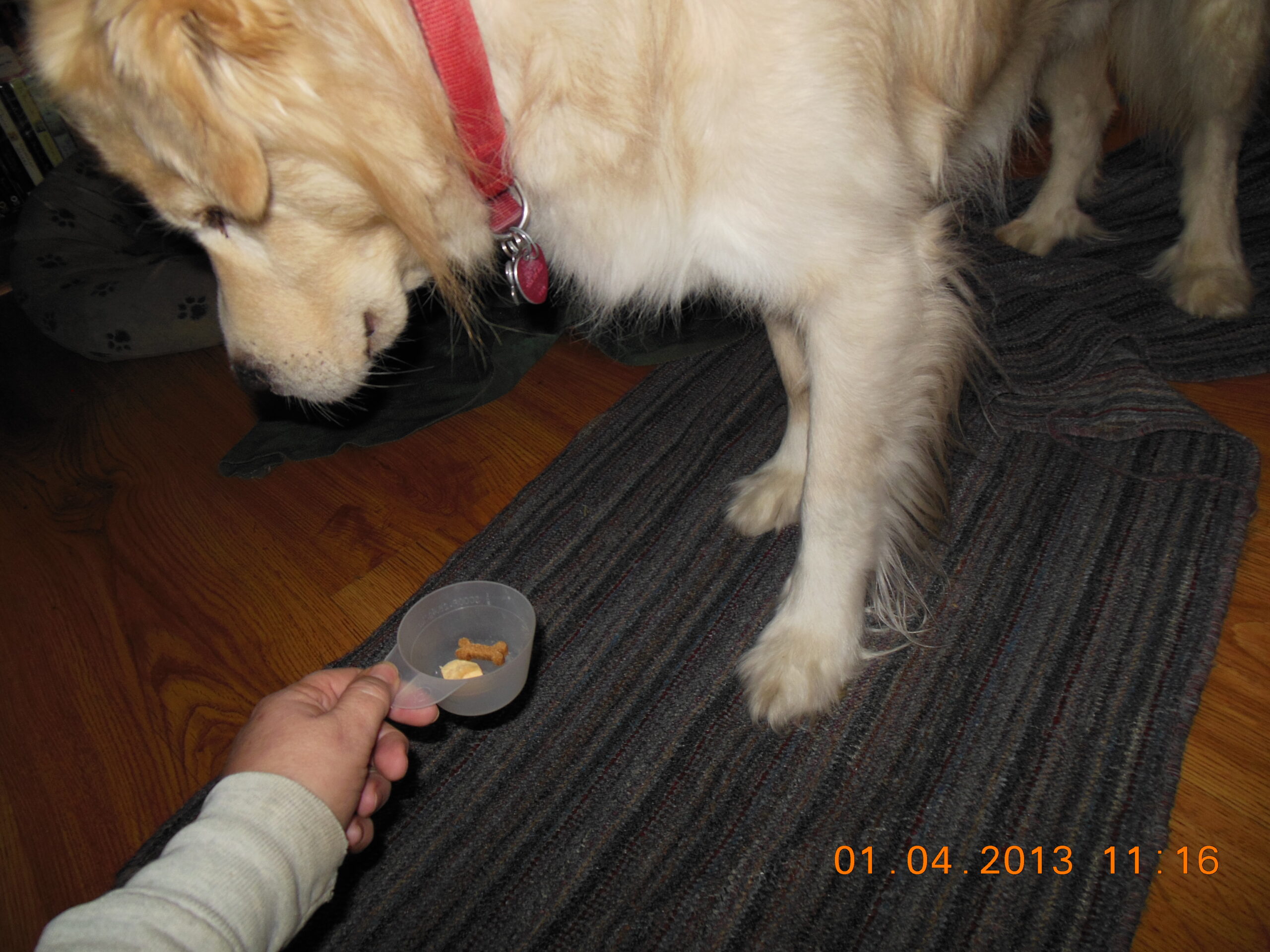
7) Confidence building. Starting with the easiest of easy puzzles or homemade games, like a muffin tin filled with balls and food under the balls or a braid filled with treats, a dog’s confidence can improve and for fearful dogs that is key to thriving not just surviving. Some dogs are not able to do puzzles at first or even foraging games. So breaking down the games into very tiny pieces to accomplish successfully incrementally builds the dog’s confidence to try ever harder problem solving.
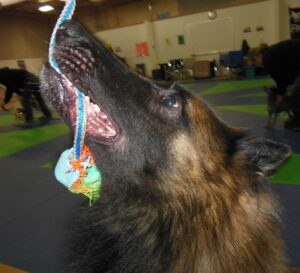
8) Show dogs. A great relaxer and focuser pre-show and post-show de-stressor. If a dog is worried about the other dogs or the crowd or noises, the games really help redirect focus onto other visuals.
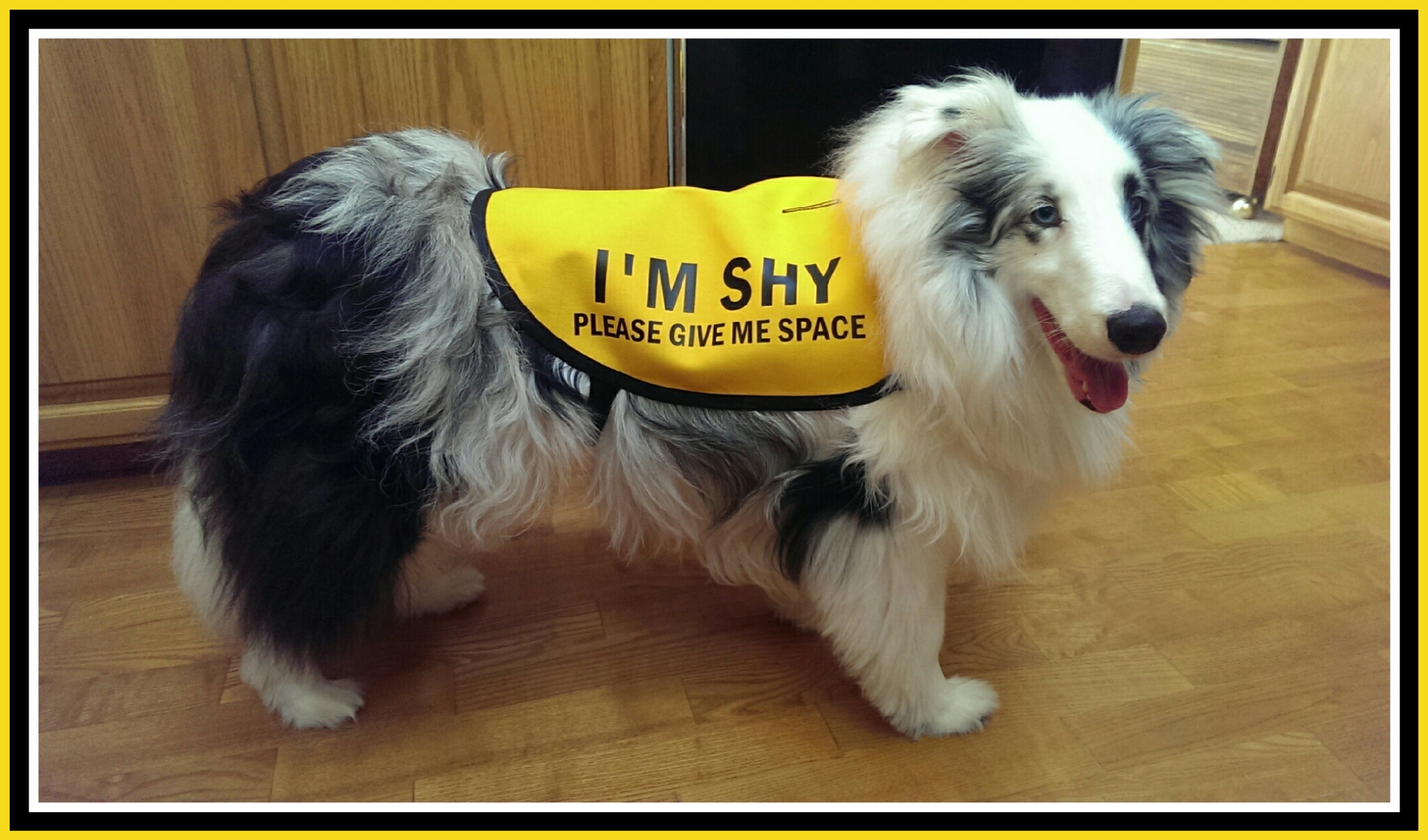
9) Point to point training for fearful dogs. Set up a pre-desensitized mat that means to relax, and a game or two to look forward to (you have to pre-set this up) and then walk slowly to the point and incrementally increase the distance the mat and toy are from point A, the doorway. Works with dogs stressed with real life, neighborhood sounds etc. Each point is measured out and the dog now has a purpose other than fearing the environment or reacting to it.
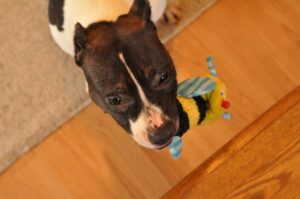
10) To teach a dog how to play and to enjoy playing. Many dogs don’t know how to play or were discouraged from playing. The dog may have become afraid to play and so this takes the edge off. A regular, several minutes long play time with a start cue and an end cue can make playtime something to look forward to no matter where the dog is in that learning curve. At first, the dog might not play at all. But with time and variety, toy play becomes something to look forward to and enjoy. It is a great laboratory for real life learning.
For problem solving I like relationship building exercises, like cup games, putting a reward on a strip of cloth and covering it with a non-moveable cover (dog must pull out reward by studying and discovering the reward is on the cloth); color recognition; size recognition and more help build relationships that have eroded and can be used in a progressive behavior modification process.
Resources:
1 Brain Games by Claire Arrowsmith
2 How Dog’s Think by Immanuel Birmlin
